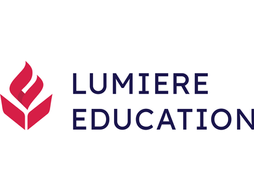Stanford Math Tournament - 7 Tips To Help You Win
What is the Stanford Math Tournament?
The Stanford Math Tournament (SMT) is an annual math competition hosted by Stanford University. As one of the largest and most prestigious high school math competitions in the United States, the tournament attracts talented high school students from around the world. The tournament typically takes place over the course of a day and includes multiple rounds. Students will compete individually and as part of teams, in events designed to challenge their mathematical skills and logical reasoning abilities.
Rules of the Stanford Math Tournament (SMT)
SMT consists of an individual portion and an overall team contest between teams of up to six students. During the team portion, an entire team will collaborate to complete the Team Test and the Power Round.
The Team Test is a 50-minute exam consisting of 15 short answer questions, testing material from all areas of mathematics.
The Power Round is a 90-minute, proof-oriented test, focusing on a single topic
For the individual portion, students may choose to take two Subject Tests or take the longer General Test.
Subject Tests are 50-minute individual exams consisting of 10 short answer questions. The subjects offered are Advanced Topics, Algebra, Calculus, and Geometry, with Advanced Topics covering probability, number theory, and combinatorics
The General Test is a 110-minute test designed for students with less mathematical background
Format of the SMT
Stanford University’s policy limits the tournament to 42 teams of 5-6 students. This means students must apply and go through a highly selective process in order to participate. The link to submit your application is on the SMT website. There is a cost of $15 per student to send in an application.
Who is eligible to participate?
Any high school student residing within the United States may apply.
What do the prizes look like?
Prizes will be awarded to the top three scorers on each individual test and the top five teams overall. In addition, SMT will recognize the top ten scorers on each individual test and the top ten teams overall. Receiving any recognition from the tournament is a wonderful and very selective honor!
7 Tips to Help You Win the Stanford Math Tournament
Participating in the Stanford Math Tournament offers both extremely challenging and rewarding experiences. As a highly competitive tournament with prestigious significance, many students look for the best ways to do well. In this article, we offer seven tips to help students perform at their best and increase their chances of success.
1. Master specific topics
When you arrive at the individual portion of the Tournament, you will be asked to choose two Subject Tests to take out of four options. This means that out of the possible topics of “Advanced Topics, Algebra, Calculus, and Geometry,” you only need to be a master of two.
For example, if you feel that you are already better at Algebra and Geometry over Calculus, then focus on sharpening your Algebra and Geometry instead of dedicating tons of time towards improving your Calculus. You don’t want to spread out your practice time over all subjects—this will likely result in a jack-of-all-trades, master-of-none scenario. Target your subjects strategically. Make sure you can ace any Algebra and Geometry question, and you’re guaranteed to do well on the Subject Tests. You can also bring these specific skills to the team portion of the tournament, acting as your team’s expert on Algebra and Geometry.
2. Practice, practice, practice
This is the most obvious tip, but one that can be the hardest to apply. The best way to get better is to practice more. If you regularly engage in problem-solving and practice sessions, soon it will become second nature. The most effective way to practice for the SMT is to practice with previous SMT problems or similar math competitions. This means you can familiarize yourself with SMT problems and problem-solving strategies—even familiarizing yourself with the wording or format of problems can be useful when the time comes! The SMT has an archive of past year problems here.
3. Time your practice
There will be a time limit to each portion of the tournament, making time management a crucial component to success. Try to mimic the real tournament’s scenarios by getting a third-party to time you as you go through practice problems. Students will need to practice solving problems within strict time limits to get an idea of how fast they’ll need to work and develop strategies to increase their speed without sacrificing accuracy. This might also help with your understanding of your own problem-solving—you might find that Calculus problems take you much longer and that you’ll need to work on getting better and faster at Calculus. You might find that you can cut down on time by using a specific shortcut. These are things you’ll realize only after timing yourself during practice—if you’re only under time-based pressure during the tournament, it might be too late!
4. Know the format
Understanding the structure and rules of the SMT will be crucial for success. Familiarize yourself with the type of questions and the time limits for each section—this will help greatly with time management. Know what the graders’ expectations are and what acceptable answer formats look like. Do unsimplified answers count? If it’s hard to distinguish your answer from your work, what will your grader do? You don’t want to get 99% of the way there and miss getting credit because you didn’t know these simple rules. Make sure you are also familiar with the way questions are asked; each tournament is going to have a different style of writing questions. You want to make sure you’re not taken aback by any unfamiliar wording and subsequently misinterpret the problem.
Here are some examples of basic SMT questions, taken from its Algebra Test:

You can access all of SMT’s past papers and problems (dating all the way back to 2011!) here.
5. Practice mental calculations
In past years, calculators and other computational aids have not been allowed. This means you’ll need to get really good at mental math, both in speed and in accuracy. Whenever you have free time, you can go on a random problem generator and try to solve each problem in your head as quickly as you can. For many people, this is one area in which it’s easy to become more efficient—after all, the hard part of each math problem is understanding how to solve it, not the calculation itself. Learn simple tricks online to shave off a few precious seconds from your problem-solving—for example, take 20% of 70. Instead of going through the calculation on paper, you can use this quick mental math trick: you know immediately that 10% of 70 is 7. Multiply everything by 2 to get 20% of 70 is 14. Easy!
6. Work in teams
For the team-based events, it is more than essential to foster good teamwork and effective communication with your teammates. Work together to solve problems, share ideas, and leverage each other’s strengths. You are each other’s resources—if you know you struggle with speed, ask your faster teammate for tips! As you practice with your team more and more, you’ll begin to know each other’s strengths and weaknesses. This leads to effective delegation: when it comes to a probability question, who is best-suited to take it? Who will be in charge of writing down the answers? These are all things you’ll need to figure out with your team before you get to the tournament. Above all, trust each other! You’re all in this together.
7. Stay calm and confident
Above all, maintain a positive mindset and stay calm during the competition. Getting overly stressed and anxious will only negatively impact your performance. Instead, tackle each problem as you’ve practiced and approach it with confidence. Focus on some relaxing activities before the competition—listen to music, or take a walk. Trust in your preparation and believe in your abilities! This will be the best mindset going into the tournament.
Lumiere Research Scholar Program
If you are passionate about research (including research in math or applied math fields!) then you could consider applying to the Lumiere Research Scholar Program, a selective online high school program for students founded with researchers at Harvard and Oxford. Last year, we had over 2100 students apply for 500 spots in the program! You can find the application form here.
Amelia is a current junior at Harvard College studying art history with a minor in economics. She’s enthusiastic about music, movies, and writing, and is excited to help Lumiere’s students as much as she can!
Image Source: SMT logo





